#kolyma
Photo
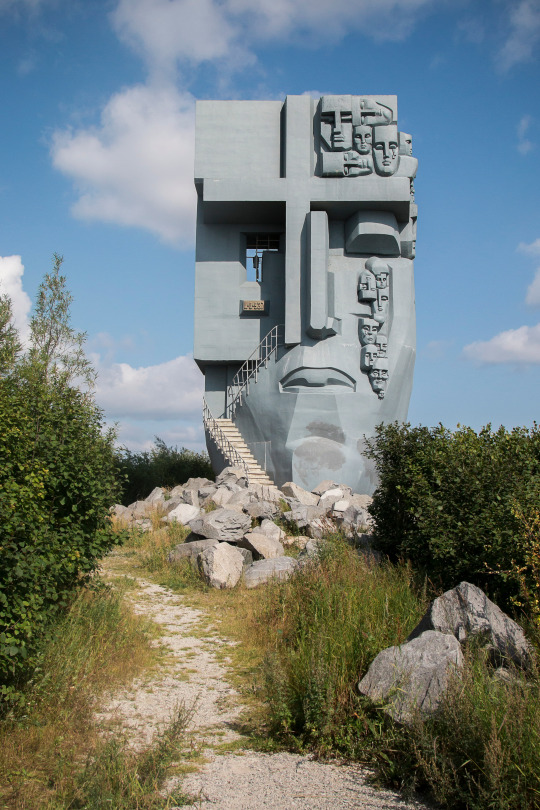
The Mask of Sorrow is a 15- meter -tall monument dedicated to the memory of the victims of mass repressions in the Soviet Union, who were placed in the Gulag labor camps in Kolyma.
976 notes
·
View notes
Photo
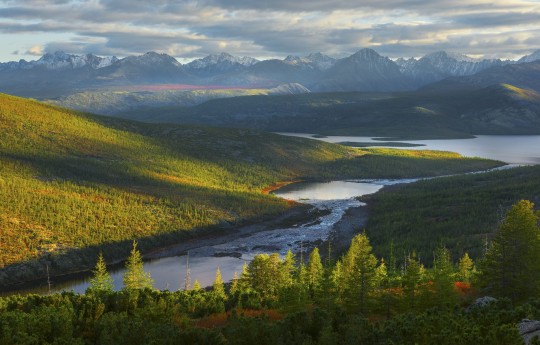
Jack London lake, Magadan Oblast
📷: Vladimir Ryabkov
114 notes
·
View notes
Photo
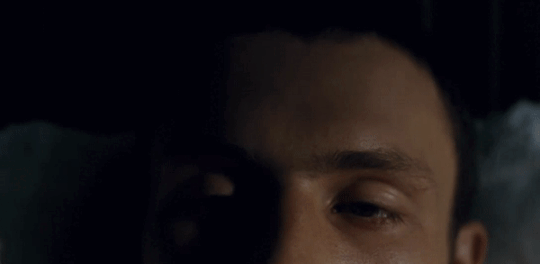



Arnas Fedaravičius as Kolyma - Siberian Education
#tried to be aesthetic with the post but it's just me fangirling in a fancy way#a dizzy baby#btw why no one else made gifs with this scene literally the only moment I didn't cringe at this movie#no hard feelings he's pretty good but the movie itself is not :p#except for that part when the girl licks his face because girl SAME#anyway time to be serious#arnas fedaravicius#kolyma#siberian education#deadly code#Arnas my beloved <3#my gifs#my edits
33 notes
·
View notes
Text

“The mountain had been laid bare and transformed into a gigantic stage for a camp mystery play.
A grave, a mass prisoner grave, a stone pit stuffed full with undecaying corpses of 1938 was sliding down the side of the hill, revealing the secret of Kolyma.
In Kolyma, bodies are not given over to earth, but to stone. Stone keeps secrets and reveals them. The permafrost keeps and reveals secrets. All of our loved ones who died in Kolyma, all those who were shot, beaten to death, sucked dry by starvation, can still be recognized even after tens of years. There were no gas furnaces in Kolyma. The corpses wait in stone, in the permafrost.
In 1938 entire work gangs dug such graves, constantly drilling, exploding, deepening the enormous gray, hard, cold stone pits. Digging graves in 1938 was easy work; there was no "assignment," no "norm" calculated to kill a man with a fourteen-hour working day. It was easier to dig graves than to stand in rubber galoshes over bare feet in the icy waters where they mined gold - the "basic unit of production," the "first of all metals."
These graves, enormous stone pits, were filled to the brim with corpses. The bodies had not decayed; they were just bare skeletons over which stretched dirty, scratched skin bitten all over by lice.
The north resisted with all its strength this work of man, not accepting the corpses into its bowels. Defeated, humbled, retreating, stone promised to forget nothing, to wait and preserve its secret. The severe winters, the hot summers, the winds, the six years of rain had not wrenched the dead men from the stone. The earth opened, baring its subterranean storerooms, for they contained not only gold and lead, tungsten and uranium, but also undecaying human bodies.
These human bodies slid down the slope, perhaps attempting to arise. From a distance, from the other side of the creek, I had previously seen these moving objects that caught up against branches and stones; I had seen them through the few trees still left standing and I thought that they were logs that had not yet been hauled away.
Now the mountain was laid bare, and its secret was revealed. The grave "opened," and the dead men slid down the stony slope. Near the tractor road an enormous new common grave was dug. Who had dug it? No one was taken from the barracks for this work. It was enormous, and I and my companions knew that if we were to freeze and die, place would be found for us in this new grave, this housewarming for dead men.
The bulldozer scraped up the frozen bodies, thousands of bodies of thousands of skeleton-like corpses. Nothing had decayed: the twisted fingers, the pus-filled toes which were reduced to mere stumps after frostbite, the dry skin scratched bloody and eyes burning with a hungry gleam.
With my exhausted, tormented mind I tried to understand: How did there come to be such an enormous grave in this area? I am an old resident of Kolyma, and there hadn't been any gold mine here as far as I knew. But then I realized that I knew only a fragment of that world surrounded by a barbed-wire zone and guard towers that reminded one of the pages of tent-like Moscow architecture. Moscow's taller buildings are guard towers keeping watch over the city's prisoners. That's what those buildings look like. And what served as models for Moscow architecture - the watchful towers of the Moscow Kremlin or the guard towers of the camps? The guard towers of the camp "zone" represent the main concept advanced by their time and brilliantly expressed in the symbolism of architecture.
I realized that I knew only a small bit of that world, a pitifully small part, that twenty kilometers away there might be a shack for geological explorers looking for uranium or a gold mine with thirty thousand prisoners. Much can be hidden in the folds of the mountain.
And then I remembered the greedy blaze of the fireweed, the furious blossoming of the taiga in summer when it tried to hide in the grass and foliage any deed of man - good or bad. And if I forget, the grass will forget. But the permafrost and stone will not forget.” (p. 178 - 180)
#shalamov#varlam shalamov#kolyma tales#kolyma#gulag#stalin#communism#soviet union#soviet literature#russia#russian lit#aleksandr solzhenitsyn#death#moscow
7 notes
·
View notes
Text
"What do we know of others' grief? Nothing. About others' happiness? Even less."
- Varlam Shalamov, Sketches From The Criminal World
10 notes
·
View notes
Text
Âmes chamanes
“Chaman Yukaghir, en 1902.”
Le chamanisme n’est-il qu’« une technique archaïque de l’extase »i ou bien est-il plutôt ce qu’on a pu appeler « un art du voyage mental »ii ? Autre hypothèse encore, ne serait-il pas les deux à la fois, une technique et un art, auxquels viendrait s’ajouter surtout le fait brut d’une révélation spirituelle, octroyée après une longue et difficile initiation, ou bien…

View On WordPress
4 notes
·
View notes
Text

Kolyma River
#kolymariver#siberia#kolyma#arcticocean#upsc#upscaspirants#upscprelims2024#upscprelims#upscpreparation#dailynews#currentaffairs#infographic#indiannews#generalknowledge#india#iasaspirants#iasexam
1 note
·
View note
Text
Kolyma
Ink on cardboard / 30 x 22 cm / Briat 2022
Le journal du peintre
Les tableaux du peintre
Painting news project
Twitter
–
–
–
–
–
–
–
–
–
–
–
Le journal du peintre
Les tableaux du peintre
Painting news project
Twitter
–
–
–
–
–
–
–
–
–
–
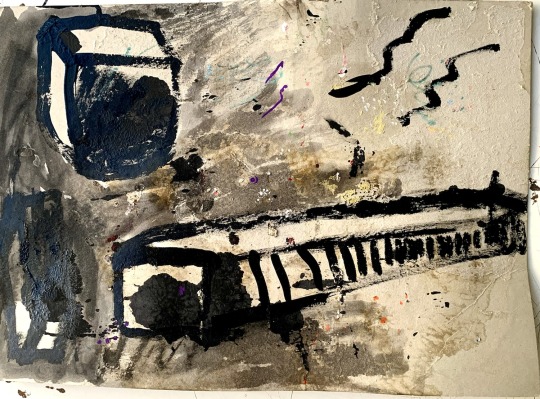
View On WordPress
0 notes
Text

Mask of Sorrow: The Crying Monument of Magadan
Mask of Sorrow is a brutalist monument located in Magadan, Russia. The statue was designed to commemorate the people in the Gulag prison camps in the Kolyma region of the Soviet Union who lost their lives under harsh conditions. Ernest Neizvestny created the design; the monument’s constructor was Kamil Kazaev, and it was unveiled in 1996.
Photographer: buttonartorg

lyubatours

one_love_magadan

oksana_lobanova
#buttonartorg#photographer#mask of sorrow#crying monument of magadan#brutalist monument#monument#magadan#russia#statue#gulag prison camps#kolyma region#soviet union#history#ernest neizvestny#kamil kazaev#lyubatours#one_love_magadan#oksana_lobanova
61 notes
·
View notes
Note
🦋
🦋 ⇢ share something that has been on your heart and mind lately
My favourite story from my thesis research, which I think about all the time:
In February 1947, Evgeniia Ginzburg was released from Elgen, a camp in the Kolyma gulag system in Siberia. By this point she had served a 10-year sentence, split between several different camps and villages — this was a common experience for gulag inmates —, during which she worked for a time as a nurse under Anton Walter, a Crimean German doctor and her future husband, in the village of Taskan, 22km (13.6 miles) from Elgen.
So on the day of her release, she calls Walter — sentences were often unexpectedly extended at the last moment, so she needed to let him know it had actually happened so he could come pick her up with a horse and sleigh borrowed from his boss and take her back to Taskan — and he tells her there's a blizzard coming in, that he's arranged lodging for her for the next three days and he'll come get her as soon as it's over. And it's Siberia, and the middle of winter — but she's been in prison for ten years, and the sky still looks clear, and the distance isn't anything she hasn't walked before.
The blizzard sets in when she's maybe halfway there. "It conveys a feeling of man's primal defenselessness," is how she would describe it in her memoir, two decades later. "You are indeed naked on the naked earth." It's freezing, and dark, and she has no idea how far she's walked or how far she has left to go — and she's been alone on the path all this time but suddenly there's someone walking towards her. And it's Walter, because he'd only managed to speak with her for a handful of minutes through the terrible reception of the camp phone that cut off half their words but he knew she wouldn't stay in Elgen, not even for another three days, and he came to get her.
#it's from ginzburg's memoir “within the whirlwind”#she got arrested again in 1949 then released when stalin died (happy stalin death day btw)#she and walter got married i believe before her second arrest (he worked in kolyma but wasn't actually an inmate)#and they adopted a daughter who went on to be an actress
5 notes
·
View notes
Text
Friendship never arises in a state of deprivation or misery. The “difficult” conditions of life, which writers of fairy tales tell us are a precondition for friendship, are simply not difficult enough. If deprivation or misery ever gave people solidarity and friendship, then the deprivation was not extreme and the misery was not very great. Grief is not acute or deep enough if you can share it with friends.
Kolyma Stories - Varlam Shalamov
9 notes
·
View notes
Text

This is the forest European rhinoceros "Merka". He lived next to the forest elephant, the European hippopotamus and the water buffalo. Unlike most modern rhinos, it was covered in hair and looked like a Sumatran rhinoceros.
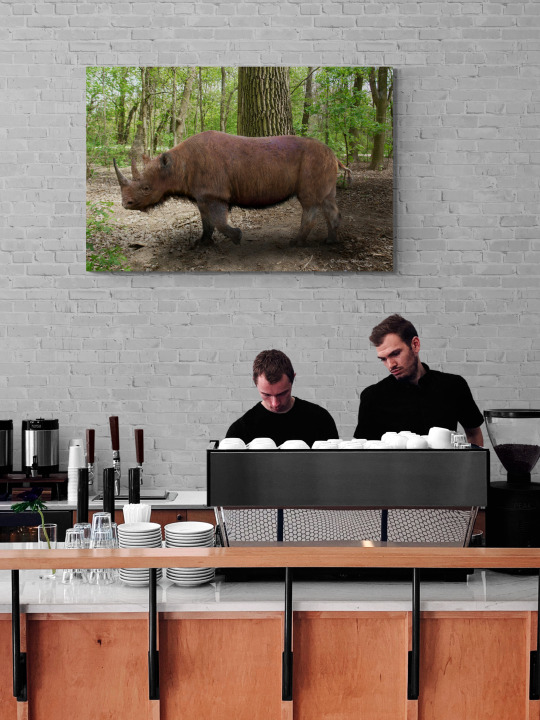


#Ice age paleoart#The Merck's rhino large canvas wall art prints#Excellent coworker gift#fathers day gifts#anniversary gift#With this original artwork you'll have exclusive office or dining room wall art#rustic decor#animal wall decor#wildlife#landscape#nature#kolyma woolly rhino#Coelodonta antiquitatis#permafrost#Woolly rhinoceros#paleontology#prehistoricfauna#extinct animal illustration#extinción#recently extinct#extinct animals
6 notes
·
View notes
Text
youtube
Watch the 2024 American Climate Leadership Awards for High School Students now: https://youtu.be/5C-bb9PoRLc
The recording is now available on ecoAmerica's YouTube channel for viewers to be inspired by student climate leaders! Join Aishah-Nyeta Brown & Jerome Foster II and be inspired by student climate leaders as we recognize the High School Student finalists. Watch now to find out which student received the $25,000 grand prize and top recognition!
#ACLA24#ACLA24HighSchoolStudents#youtube#youtube video#climate leaders#climate solutions#climate action#climate and environment#climate#climate change#climate and health#climate blog#climate justice#climate news#weather and climate#environmental news#environment#environmental awareness#environment and health#environmental#environmental issues#environmental education#environmental justice#environmental protection#environmental health#high school students#high school#youth#youth of america#school
17K notes
·
View notes
Text
Time to share another of my favorite Christian poems with you all. It’s a martyrdom poem by Varlam Shalamov, a victim of the Soviet gulags and also the writer of Kolyma Tales. A few favorite stanza are written out here; the entire poem is typed out below. It’s a little on the long end, but entirely worth it.
“Avvakum in Pustozyorsk” by Varlam Shalamov


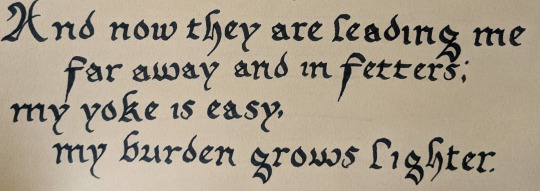
The walls of my church
are the ribs of my heart;
it seems life and I
are soon bound to part
.
My cross now rises,
traced with two fingers.
In Pustozyorsk it blazes;
its blaze will linger.
.
I’m glorified everywhere,
vilified, branded;
I have already become
the stuff of legend.
.
I was, people say,
full of anger and spite;
I suffered, I died
for the ancient rite.
.
But this popular verdict
is ugly nonsense;
I hear and reject
the implied censure.
.
The rite is nothing—
neither wrong nor right;
a rite is a trifle
in God’s sight.
.
But they attacked our faith
in the ways of the past,
in all we’d learned as children
and taken to heart.
.
In their holy garments,
in their grand hats,
with a cold crucifix
in their cold hands,
.
in thrall to a terror
clutching their souls,
they drag us to jails
and herd us to scaffolds.
.
We don’t mind about the doctrine
books and their age;
we don’t debate virtues
of fetters and chains.
.
Our dispute is of freedom,
and the right to breathe—
about the Lord’s will
to bind as he please.
.
The healers of souls
chastised our bodies;
while they schemed and plotted,
we ran to the forests.
.
Despite their decrees,
we hurled our words
out of the lion’s mouth
and into the world.
.
We called for just vengeance
against their sins;
along with the Lord,
we sang poems and hymns.
.
The words of the Lord
were claps of thunder.
The Church endures;
it will never go under.
.
And I, unyielding,
reading the Psalter,
was brought to the gates
of the Andronikov Monastery.
.
I was young;
I endured every pain:
hunger, beatings,
interrogations.
.
A winged angel
shut the eyes of the guard,
brought me cabbage soup,
and a hunk of bread.
.
I crossed the threshold—
and I walked free.
Embracing my Exile,
I walked to the east.
.
I held services
by the Amur River,
where I barely survived
the winds and blizzards.
.
They branded my cheeks
with brands of frost;
by a mountain stream
they tore out my nostrils.
.
But the path to the Lord
goes from jail to jail;
the path to the Lord
never changes.
.
And all too few,
since Jesus’s days,
have proved able to bear
God’s all-seeing gaze.
.
Nastasia, Nastasia,
do not despair;
true joy often wears
a garment of tears.
.
Whatever temptations
may beat in your heart,
whatever torments
may rip you apart,
.
walk on in peace,
through a thousand troubles
and fear not the serpent
that bites at your ankles—
.
though not from Eden
has this snake crawled;
it is an envoy of evil
from Satan’s hand.
.
Here, birdsong
is unknown;
here one learns the patience
and the wisdom of stone.
.
I have seen no color
except lingonberry
in fourteen years
spent as a prisoner.
.
But this is not madness,
nor a waking nightmare;
it is my soul’s fortress,
its will and freedom.
.
And now they are leading me
far away in fetters;
my yoke is easy
and my burden grows lighter.
.
My track is swept clean
and dusted with silver;
I’m climbing to heaven
on wings of fire.
.
Through cold and hunger,
through grief and fear
towards God, like a dove,
I will rise from the pyre.
.
O far-away Russia—
I give you my vow
to return to the sky
forgiving my foe.
.
May I be reviled,
and burned at the stake;
may my ashes be cast
on the mountain wind.
.
There is no fate sweeter,
no better end,
than to knock, as ash,
at the door of the human heart.
#this poem absolutely destroys me#there are so many threads running through it but more than anything I see such beautiful submission to God's will in it#the road to the Lord goes from jail to jail; the road to the Lord never changes#and so there's this exhortation to relish martyrdom and long for glory#like so many of the martyrs#and yet it's so uniquely personal and Soviet#that opening line: if they blow up our cathedrals and outlaw our meetings we will still carry the church in our chests#behind our ribs in our hearts#and then to say 'we don't care about the specific books or rites or liturgies we care about /freedom/#but not freedom in the way that most people in this situation would mean it in the way that he would have every right to mean it#freedom for God to bind as he please#and somehow the part that makes my heart twist most with grief is 'i have seen no color but lingonberry in fourteen years'#YET still this is not a waking nightmare; it is my soul's fortress#my soul's barren colorless fortress#but God is there#and so my yoke is easy#ughhhh this poem#and that ending#the awareness that the greatest end a person can have is to have one's death be a tertimony#if you haven't read it read Kolyma Tales#it's some of the most beautiful prose I have ever read applied to one of the most awful subjects in history#and for goodness' sake read this poem#it will do your soul good#the unquenchable fire#literature makes us more human#leah learns calligraphy#i would cut off a toe for the chance to write about this poem in a formal context#but tumblr will have to do#martyr club this is for you#russia where are you flying to?
12 notes
·
View notes
Text
So last night I attempted to watch Siberian Education because (baby) 💫Arnas💫 - wasn't my cup of tea and couldn't stand the fake russian accents (plus some of the actors lost it mid conversation, lol) but hey I tried and at least he looks so cute 🥺
#btw yes I laughed at that “”beard“” Arnas/Kolyma has in parts of the movie lmao#got to the part when he sees that girl and the other guy jokes because she's looking at Arnas#and I was like ?? of course she's looking at him he's the prettiest from the bunch 😤#kyra's ramblings
2 notes
·
View notes
Text
“Love didn't return to me. Oh, how distant is love from envy, from fear, from bitterness. How little people need love. Love comes only when all other human emotions have already returned. Love comes last, returns last. Or does it return? Indifference, envy, and fear, however, were not the only witnesses of my return to life. Pity for animals returned earlier than pity for people.” - Varlam Shalamov, ‘Kolyma Tales’
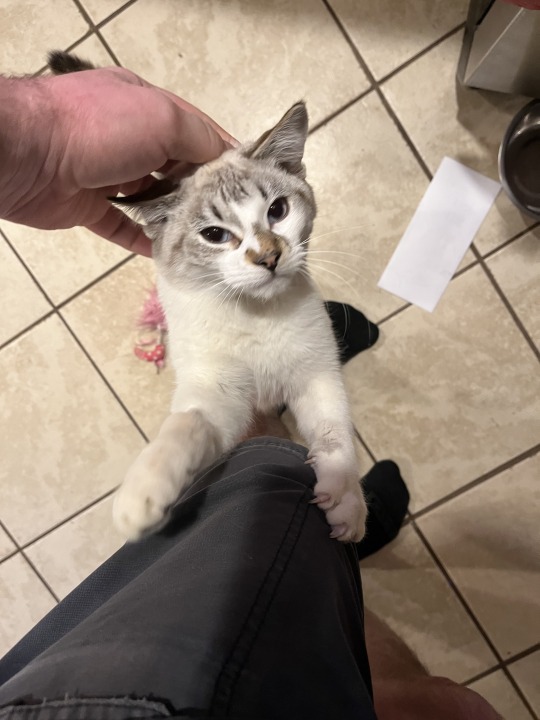
4 notes
·
View notes
Text
The end of their arc is upon us

After months of reworking and many o’ dice roll, the penultimate chapter of Siren Song is uploaded. Thanks to all that have been reading, and we hope you hang tight for the final chapter.
#slaves of the siren song#homestuck#eridan ampora#karkat vantas#erikar#erikat#mandi writes#mandi's artwork#mandi draws#bellmandi86#Harume hikari-seki#harume#fantrolls#Kolyma ramaca#may The Outer Gods show benevolence for your plight
3 notes
·
View notes
Text
youtube
Watch the American Climate Leadership Awards 2024 now: https://youtu.be/bWiW4Rp8vF0?feature=shared
The American Climate Leadership Awards 2024 broadcast recording is now available on ecoAmerica's YouTube channel for viewers to be inspired by active climate leaders. Watch to find out which finalist received the $50,000 grand prize! Hosted by Vanessa Hauc and featuring Bill McKibben and Katharine Hayhoe!
#ACLA24#ACLA24Leaders#youtube#youtube video#climate leaders#climate solutions#climate action#climate and environment#climate#climate change#climate and health#climate blog#climate justice#climate news#weather and climate#environmental news#environment#environmental awareness#environment and health#environmental#environmental issues#environmental justice#environment protection#environmental health#Youtube
17K notes
·
View notes